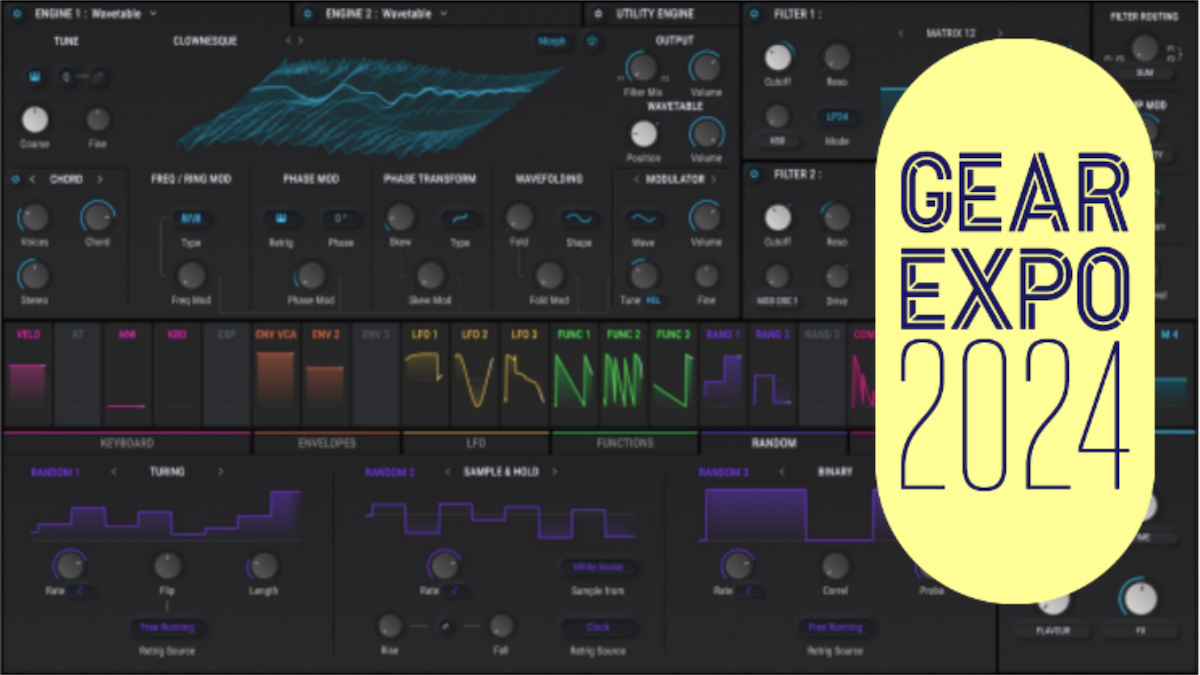
GEAR EXPO 2024: This year looks like being a bumper year for softsynths following on from what was an incredibly busy 2023. We're celebrating both the most recent softsynth releases here, plus some new releases just announced as we round up the softsynths that look like rocking 2024.
We've got big updates, some fantastic emulations of classic hardware synths, even a surround sound synth. If you want to know which synths will be setting the trends and scoring the charts, read on for our must-have synth plugins of the year.
Arturia Pigments 5
This €199 VA, granular, wavetable and sampling synth has graduated to version 5 and really does stand out in Arturia’s collection of emulations as a unique synth in its own right. It features incredible modulation, a slick workflow, easy setup, great UI and lovely sound, all of which still makes it one of the most well-rounded synths of 2024.
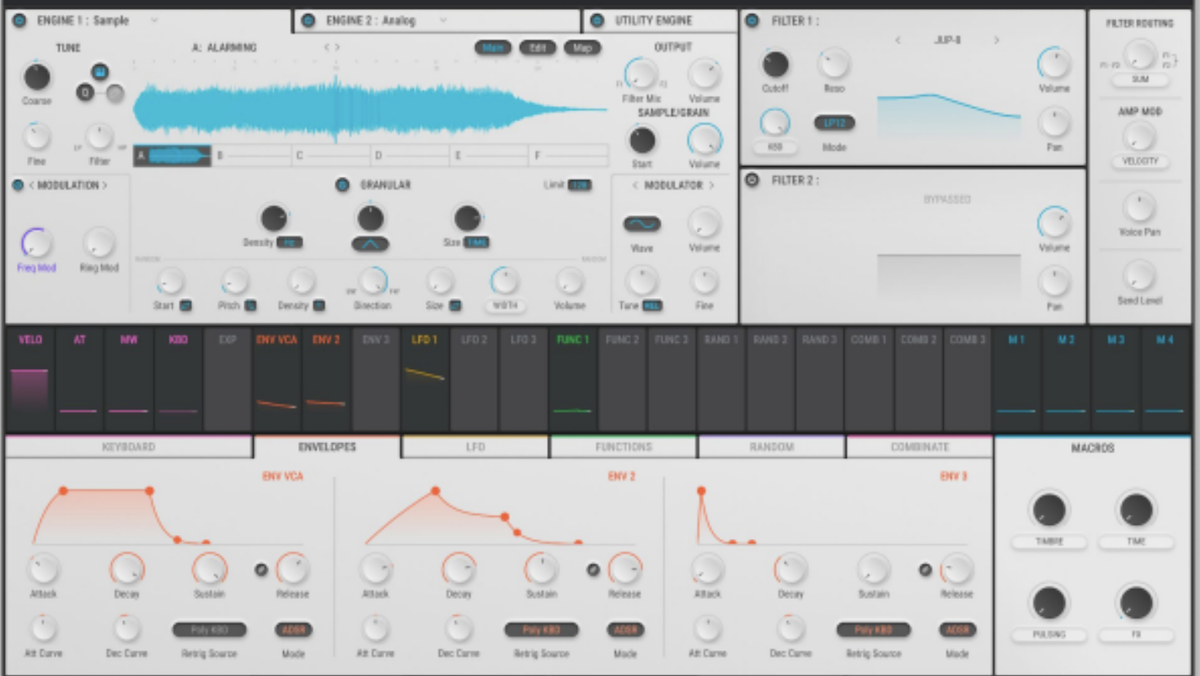
The latest v5 boasts quite a few additions including 150 extra sounds (making a total of over 1500) and an upgraded sequencer with one-click sequence generation, new play modes, and more browsing features. There's enhanced audio routing – including audio input processing and enhanced effects routing – plus a refreshed UI with a better Play view and new waveform visualisers.
We already called Pigments 4 "one of the most inviting and versatile synthesisers in software, with a sound engine which will impress across most areas", so these version 5 improvements looks set to keep Pigments atop the synth tree in 2024.
Get more information about Pigments from Arturia's website.
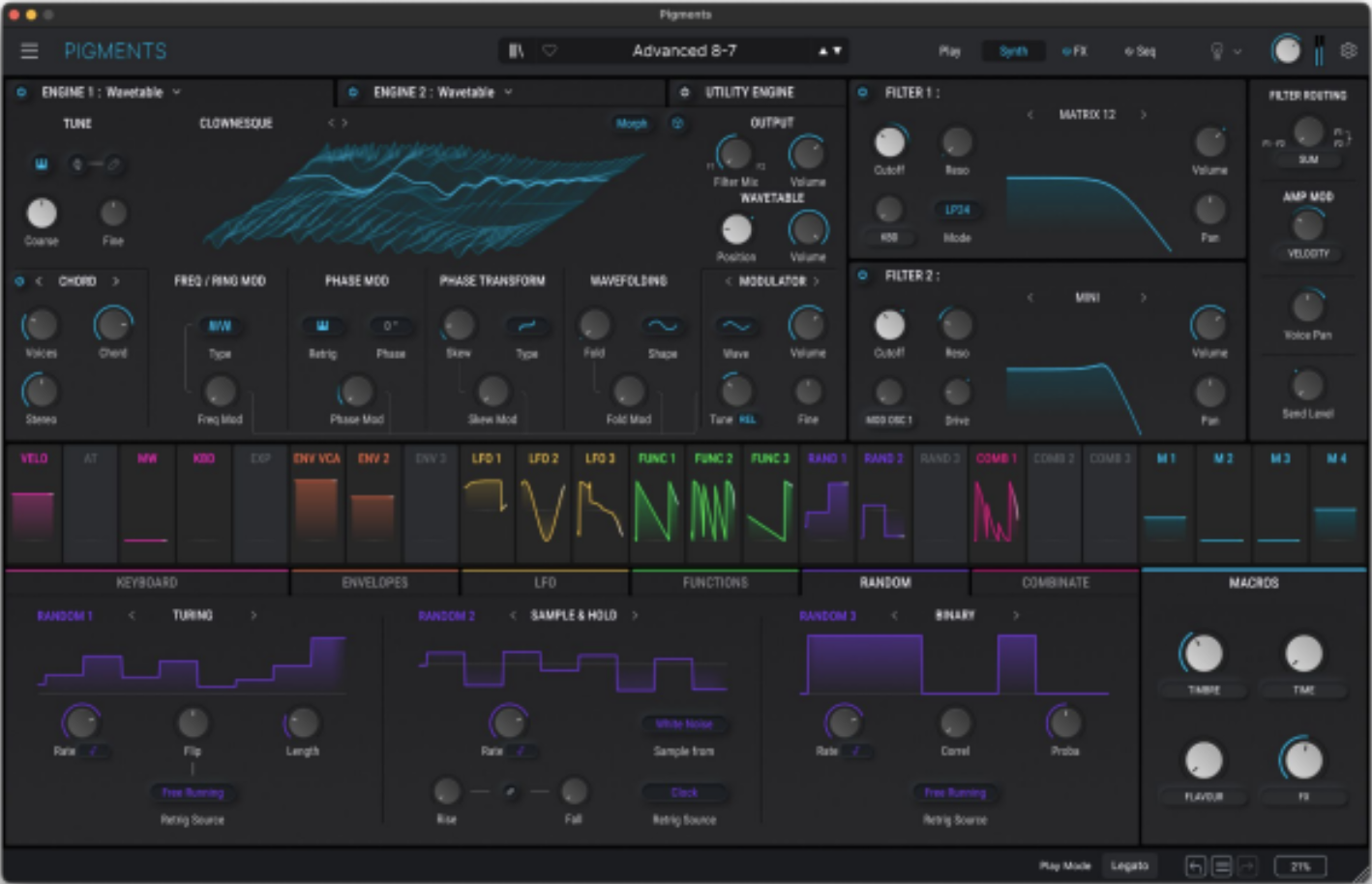
Sound Particles SkyDust 3D
SkyDust is the first 3D synth, and you can modulate sounds so that they move all around you using spatial audio. As good as this is, it almost overshadows the fact that this is a very powerful synth in its own right.
With eight oscillators, each with 16 waveforms, you can (easily) layer up all sorts of complex sounds, and yes, have them spin around if you like. There are two versions: a standard stereo one and full-on surround version.
As we said: "That £333 version is expensive (although as we write this, both versions are on offer), so you might want to consider the cheaper one if your speaker arrays are less impressive than your local Odeon’s. In fact, SkyDust is pretty impressive on its own terms as a stereo/binaural synth.
"The full SkyDust 3D, however, is more about designing sounds ‘all… around… you’ as your local flicks will say. And it does it superbly, surprisingly easily and with the kind of aplomb that other developers will surely seek to emulate."
Read our full review here or get more information from the Skydust 3D website here.

Silen Audio Infinite Flow
Infinite Flow is a response to the 'softsynths are too perfect' argument. It is a virtual analogue synth with the sonic character of some classic polysynths but focusses on recreating their sonic imperfections.
Silen Audio says it has captured the character of 12 different analogue polys in developing the plugin. Some of the synths that have inspired Infinite Flow include icons like the Yamaha CS-80, Oberheim OB-4 and the Roland Jupiter-8, so you know you re in safe hands.
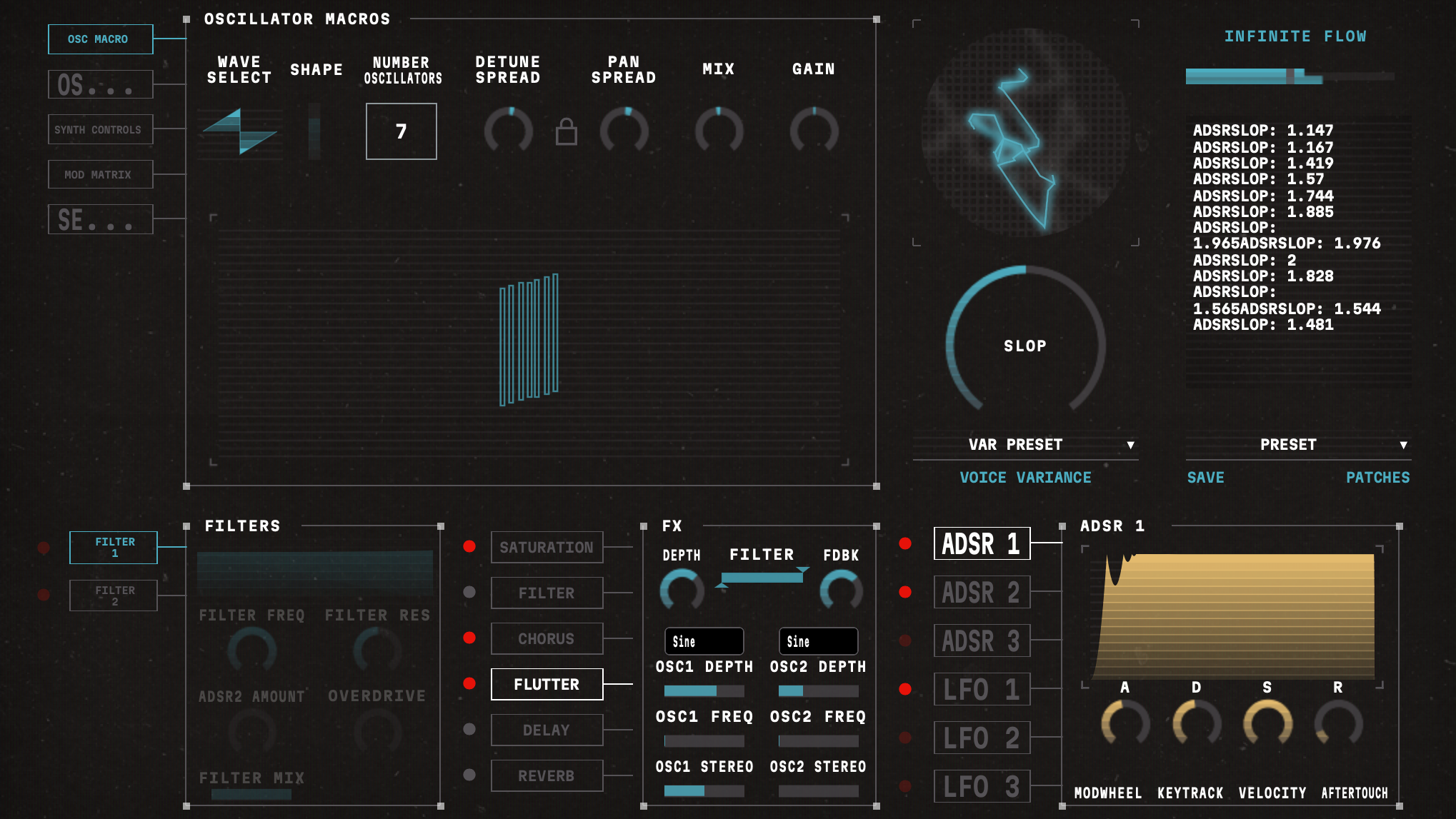
The imperfections come by way of the 'Slop' parameter (Silen Audio's term for analogue modelling) which you can control, and also randomise various other voice parameters. There's even an option to create your own models.
Infinite Flow is an eight-voice synth with seven oscillators that can be individually detuned and panned for fuller-sounding patches. There are two multimode filters, five effects, three envelopes, and three LFOs for extra sonic tweaking.
Check out the presets in the video below for the end results – it's certainly another interesting synth to look out for this year, and we'll have a review soon.
Minimal Audio Current
Minimal Audio’s Current is a powerful synth with a cloud-based ecosphere that lets you load in presets, samples and wavetables, keeping the softsynth constantly ahead of the competition by morphing with the synth times.
It features Minimal Audio’s excellent effects to help you shape the tones you already own, and also has a fantastic modulation area to really get some movement going across its many sounds.
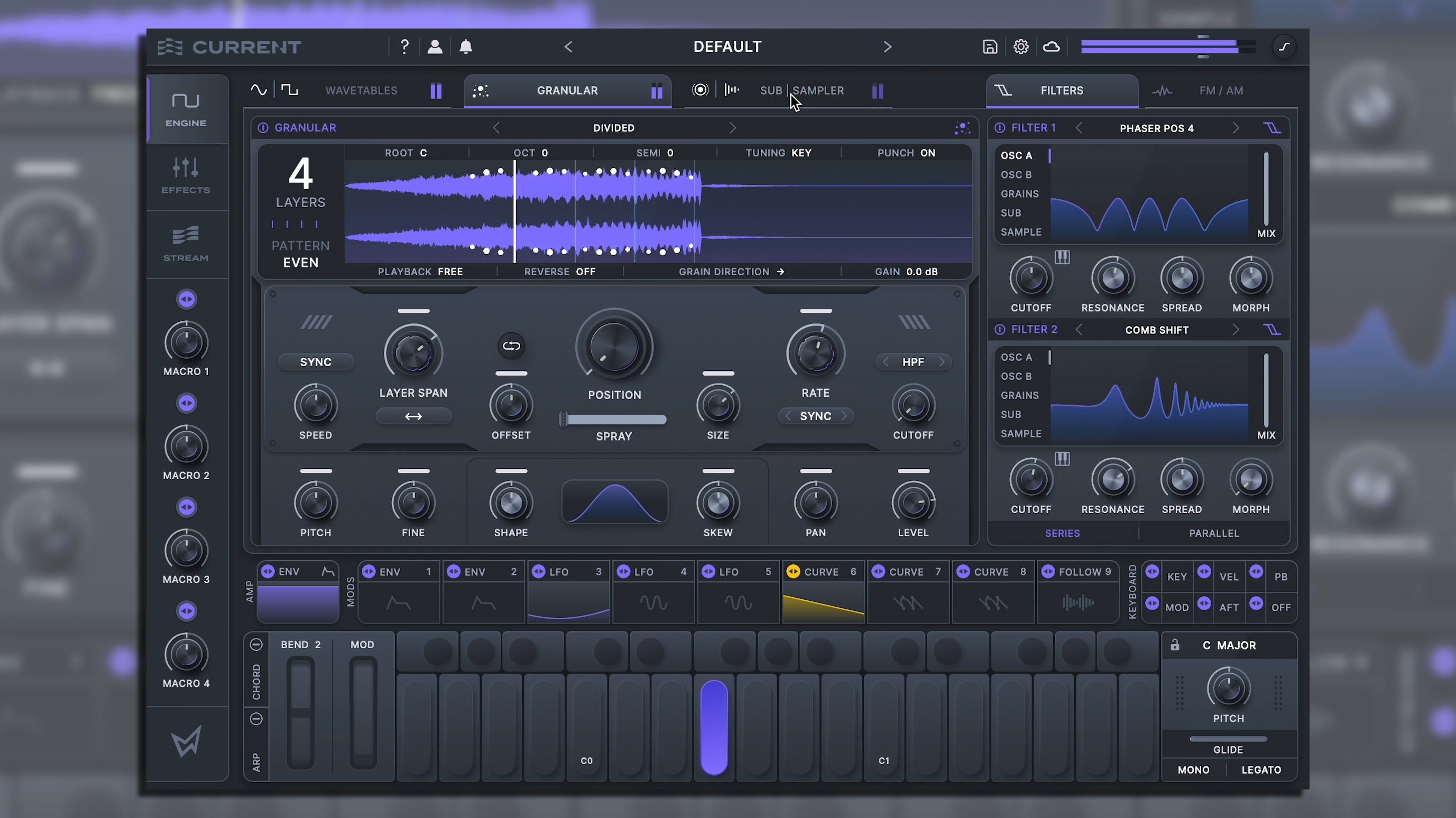
In our review we said. "the engines, modulation and effects alone make Current a great sound design tool, and while the existing sounds seem to be geared more for the EDM masses, there is plenty to get your teeth into if a more experimental electronic vibe is required.
"And that’s where the superb effects come into their own – it’s almost worth the subscription as you get these thrown in as extra plugins. Still Current is a great synth and worth the rather large outlay if you really make the most of that initial year of All Access content."
That outlay is $199 or subscribe for between $10 and $15 a month for All Access to Minimal Audio's content cloud.
More from Minimal Audio here.
Moog Mariana
Moog's Minimoog is well known for its brilliant, rounded bass sounds, so it seems fitting that the company's latest softsynth is entirely devoted to low-end tones. Mariana takes its inspiration from the aforementioned Minimoog, plus other big names in Moog's history including the Taurus, Sub Phatty and Minitaur.
But Mariana is not just looking to the past – it definitely has some 2024 leanings too, not least because it runs as an iOS plugin as well as on a standard Mac and PC.

Mariana features dual-layers that can be stacked together or played duophonically, and each one offers two oscillators and a sub-oscillator. It also features two classic Moog filters, along with a third that’s designed specifically for the sub-oscillator.
There are effects including tube, tape and saturation, plus a “tight” compressor and delay, and chorus processors that can be applied on a per-layer basis.
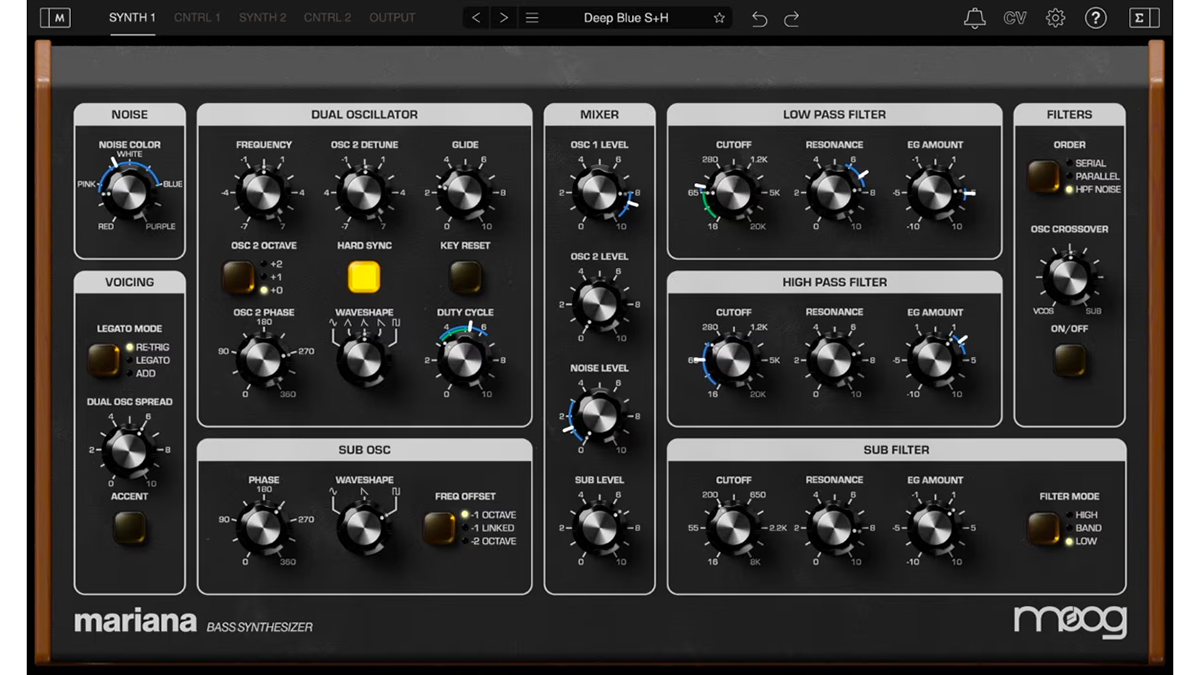
Modulation features include three LFOs, three envelopes and two random generators per layer, plus a dedicated modulation editor. This enables you to design sounds that evolve over time – every parameter of Mariana can be modulated internally via MIDI, MPE, and virtual CV.
Mariana comes in VST/AU formats for desktop platforms and costs $99, with the iOS version coming in at $30.
Get more information from the Moog website.
Cherry Audio Pro Soloist
Cherry Audio has had a terrific run of very decently-priced synths in recent years, and its latest offering looks like combining a classic with some very 2024 features. It models the ARP Pro Soloist, a much beloved synth used by the likes of Tony Banks, Chick Corea and Herbie Hancock.
Cherry's Pro Soloist bumps up the original’s specs and has full programmability, polyphony, a dual- layer engine, an arpeggiator, a mod matrix, and effects.
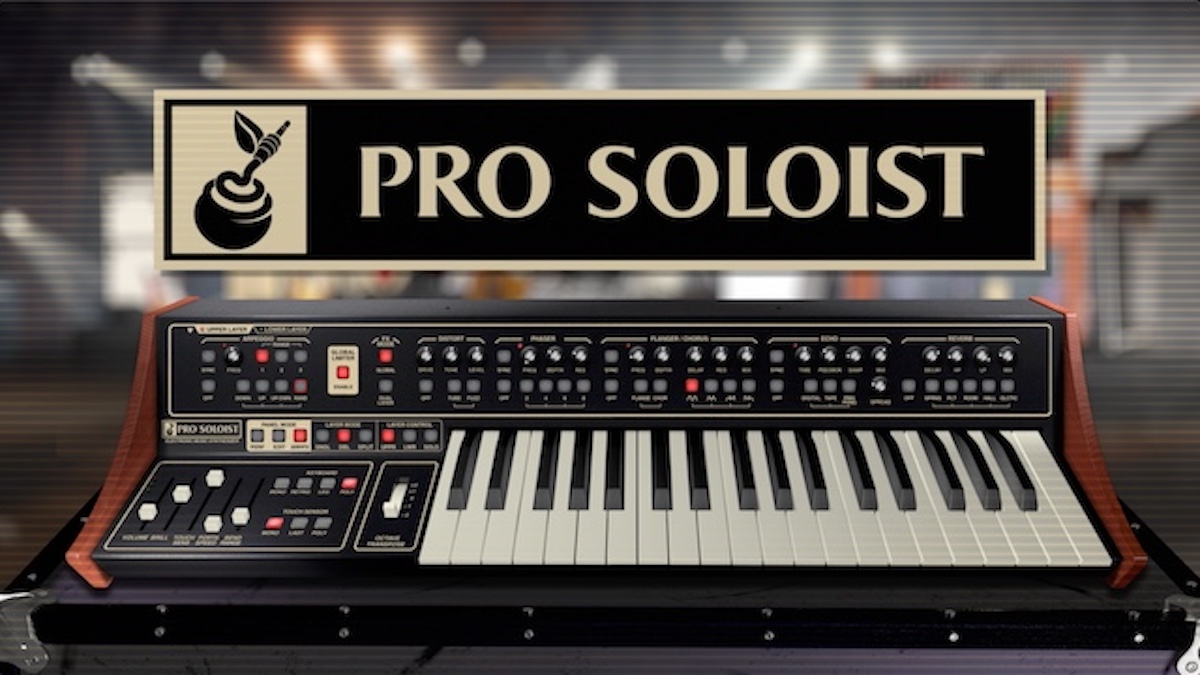
There’s also a dual-layer voicing architecture so you can mix and match two sounds at once, each with 16 polyphonic voices per layer and independent panning. The synth has a three-panel interface which expands the original’s abilities massively.
You get access to the original sounds in Performance mode, while in Edit mode, you get the keys to the analogue synthesis room including the Resonator Bank, which was behind the original’s realistic orchestral sounds. A third panel reveals an arpeggiator and effects that include distortion, phaser, flanger/chorus, echo and reverb.
Just $69 gets you an emulation of a machine that you could expect to pay $2,500 for if you bought an original! Get more info from the CA website.
Sonic Charge Synplant 2
The first version of Synplant was massively bonkers back in 2009, with the idea of creating evolving sounds by growing branches from a seed – yes, really. But Synplant 2 takes the seed of that idea (yes, we did put some thought into that sentence) and grows it up a few hundred walls.
It’s like they threw Synplant 1 into some heavily fertilised (or drugged) soil and irradiated it with the suns of a far off galaxy to come up with Synplant 2, for it has more ambition and innovation than anything else we've seen this last year.
Synplant 2 still has the same central seed from which you grow branches, each one extending into one of 12 slots representing (in Standard mode) the notes of an octave. As you grow a branch, so timbres change. Find a sound you like – often more by luck than judgement – and you can save it as a preset and get all the notes around it to play the same timbre.
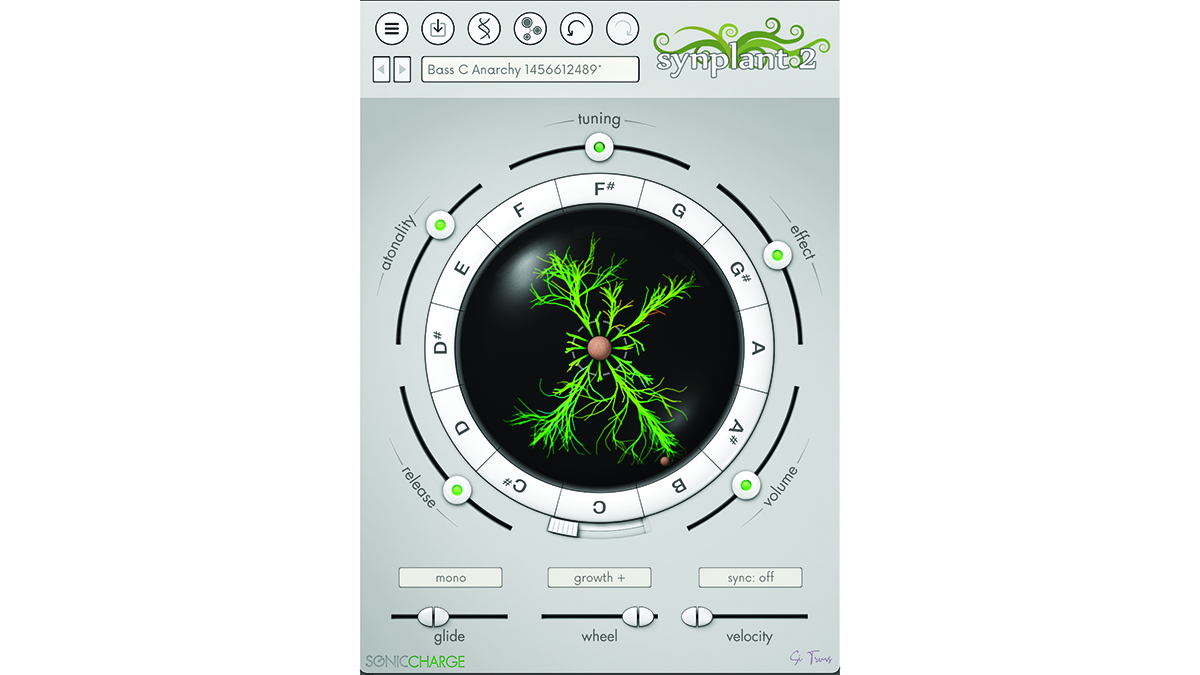
But the big new talking point is Genopatch which utilises AI to recreate sounds. Add any audio file and Synplant attempts to replicate the sound with its synth engine and produce variations of it, some similar, some wildly different. It’s great for sound design as you are effectively creating a number of new sounds from a single source.
In our review we concluded: "Genopatch is an excellent and genuinely unique feature. Some other areas of Synplant haven’t seen a huge overhaul since version one – resulting in a UI that looks rather dated and clunky preset browsing – but it remains utterly unique and always inspiring.
"Synplant was already an inspirational oddity, but it’s now even more unique and fun thanks to one of the best uses of AI we’ve seen."
Synplant 2 costs £$149 and you can get more info from the Sonic Charge website.
Looking for more great new gear? Get all our roundups, news, features, tutorials, tips and more at our Gear Expo hub page.







